Century-old forest at Botanic Gardens opens
SINGAPORE — Having a feel of the white flaky bark of the Gelam tree, taking in sights from the height of tree canopies on a boardwalk perched 8m above ground, and wandering into freshwater wetland habitats. These are some of the unique experiences visitors can expect at the Singapore Botanic Gardens’ latest attraction, the Learning Forest spanning 10ha.
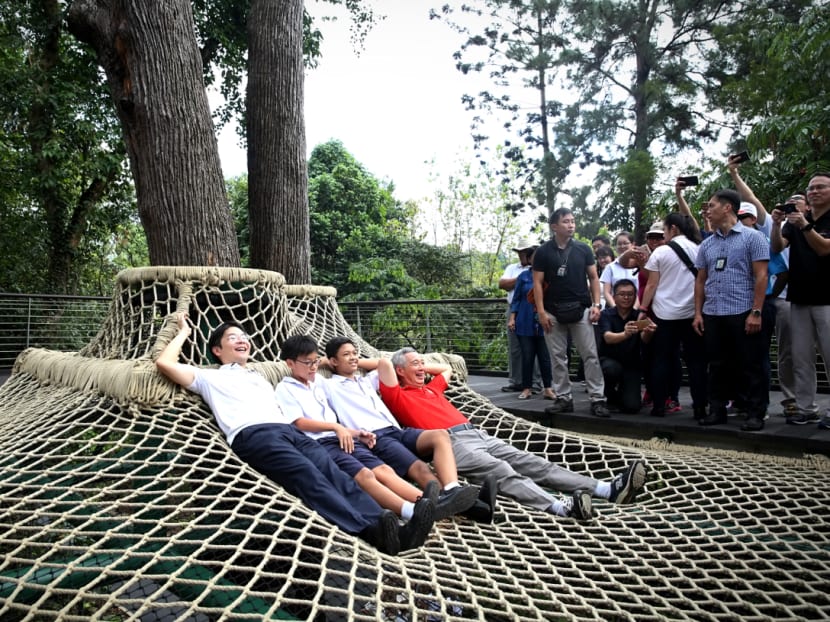
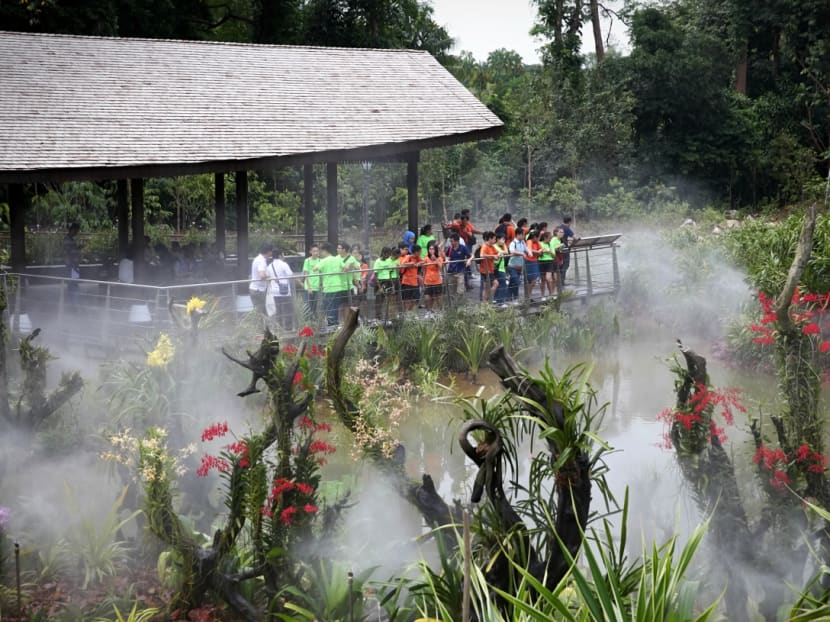
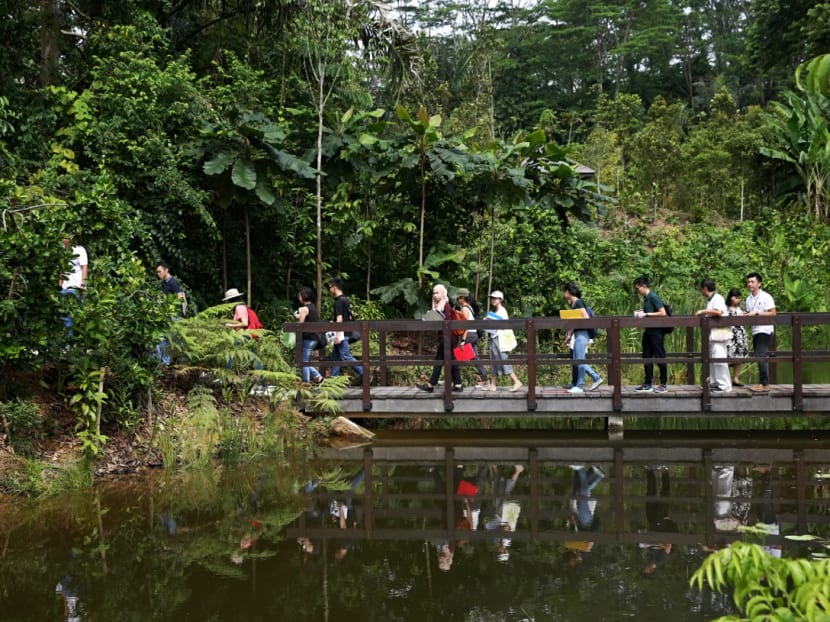

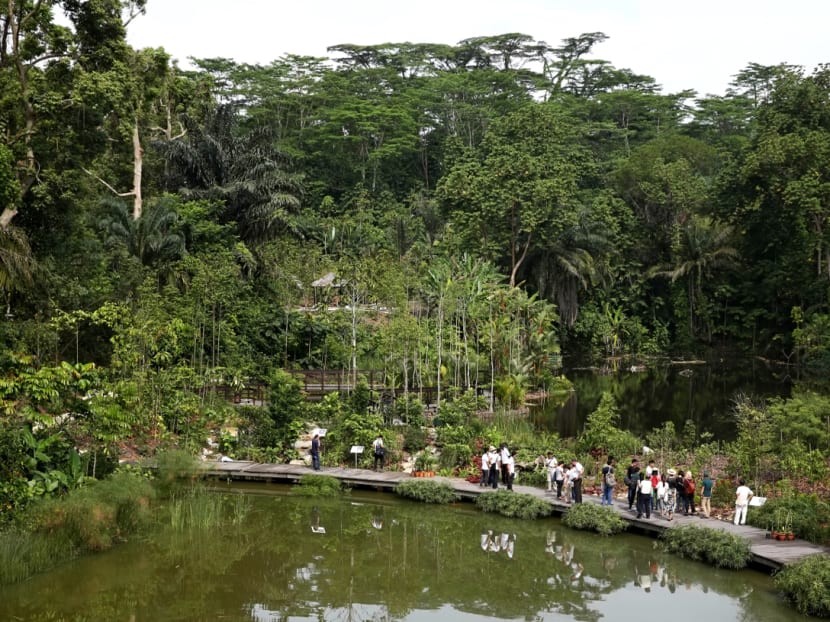
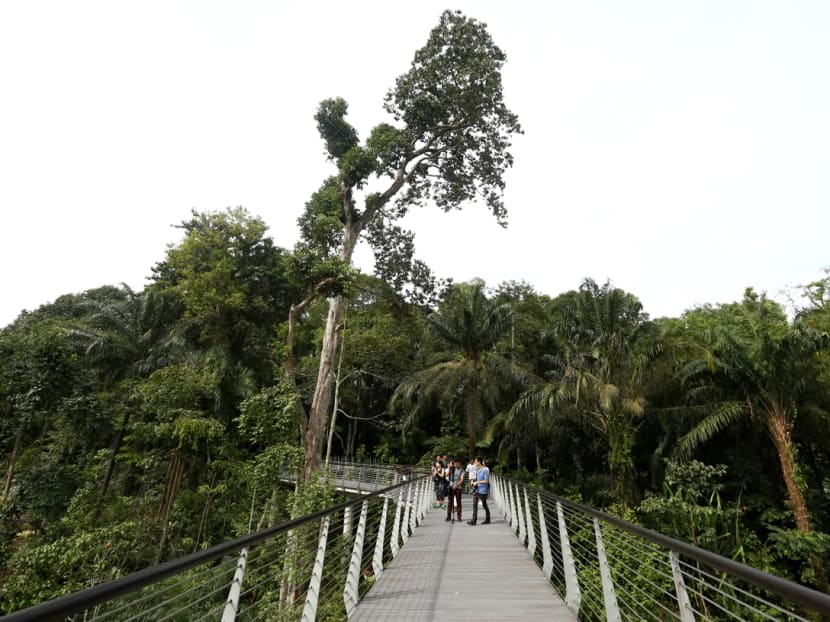
SINGAPORE — Having a feel of the white flaky bark of the Gelam tree, taking in sights from the height of tree canopies on a boardwalk perched 8m above ground, and wandering into freshwater wetland habitats. These are some of the unique experiences visitors can expect at the Singapore Botanic Gardens’ latest attraction, the Learning Forest spanning 10ha.
Comprising more than 700 plant species — some of which are rare or even once-extinct — and over 200 species of fauna, this secondary forest, located next to Tyersall Avenue, officially opened to the public on Friday (March 31).
The Learning Forest, which cost S$30 million and nearly three years to build, is linked to the main garden’s 6ha nature area — one of Singapore’s few remaining patches of primary forest.
Back in the 19th century, the site was used for the cultivation of gambier and pepper, then, for large residential estates before it was set aside as part of the Singapore Botanic Gardens’ extension plans in 2009.
After efforts to regenerate certain species of flora and restoring former habitats, the site now features a lowland forest ecosystem at its southern end, and moving northwards, a 1.8ha forest wetland, a collection of wild fruit trees and a bamboo garden. The Learning Forest also forms part of the protective buffer zone against urban development around the Botanic Gardens, which is a Unesco World Heritage Site.
Visitors will be able to lie on a rope net or to trek past giant trees that can grow up to 60m tall along the Singapore Press Holdings Walk of Giants, an 8m-high, 260m-long elevated boardwalk. Lining the boardwalk are trees such as the Sea Apple tree, which used to be planted by the British as firebreaks near the highly flammable lalang wastelands.
Other plant species include the forest palms such as the Ibul, which has seeds toxic enough to kill an elephant. Another is the Gelam tree, which gave heritage district Kampong Glam its name. Visitors can get to feel its unique white, flaky and spongy bark.
Further north of the forest, the National Parks Board (NParks) also recreated the wetland ecosystem that used to be there in the 1860s. It now includes more than 200 plant species.
At the Keppel Discovery Wetlands, visitors will find a freshwater swamp habitat, Pulai Marsh, that eventually feeds into Swan Lake, a natural water source in the main garden. They may also see flora species such as Pulai Basong — fewer than 20 of its kind left in Singapore. Fauna such as the Red-legged Crake and the Black Marsh Terrapin are some of the inhabitants in the marshland.
Located near the wetlands are the man-made Orchid Islands, where native orchids thrive. Some of the species include the yellow and red Deer Antlered Phalaenopsis, which was once extinct but has been reintroduced by NParks.
Over at the wild fruit tree arboretum, there are more than 50 species of trees. One is the Asam Gelugor, a critically-endangered species that bears bright yellow-orange fruits which can grow up to 10cm in diameter. Another is the Redan tree, where the fruit is a hairless relative of the rambutan.
The fifth section is the bambusetum, which features 30 species of bamboo found in Asia. Of note is the Giant Bamboo, which can grow up to 10 storeys, and its stems are wide enough to be used as buckets when cut.
Speaking at the Learning Forest’s official opening on Friday, Prime Minister Lee Hsien Loong said the Botanic Gardens was successful in its Unesco bid because for more than 150 years, Singaporeans have taken special care of the gardens. “We nurtured it, cultivated it, expanded it and developed the gardens, not just for leisure and recreation, but also for education and scientific work,” he said.
Now, the Learning Forest builds on this legacy of conservation and improvement, he added.
With time, the forest will be able to enrich Singapore’s natural heritage, said Mr Lee, who together with other guests, also planted the native Singapore Kopsia trees, which bear white flowers with a red centre.
Admission to the Learning Forest is free, and it is open from 5am to midnight daily. The wetlands and the boardwalk will be closed from 7pm to 7am to keep a conducive environment for the wildlife.






